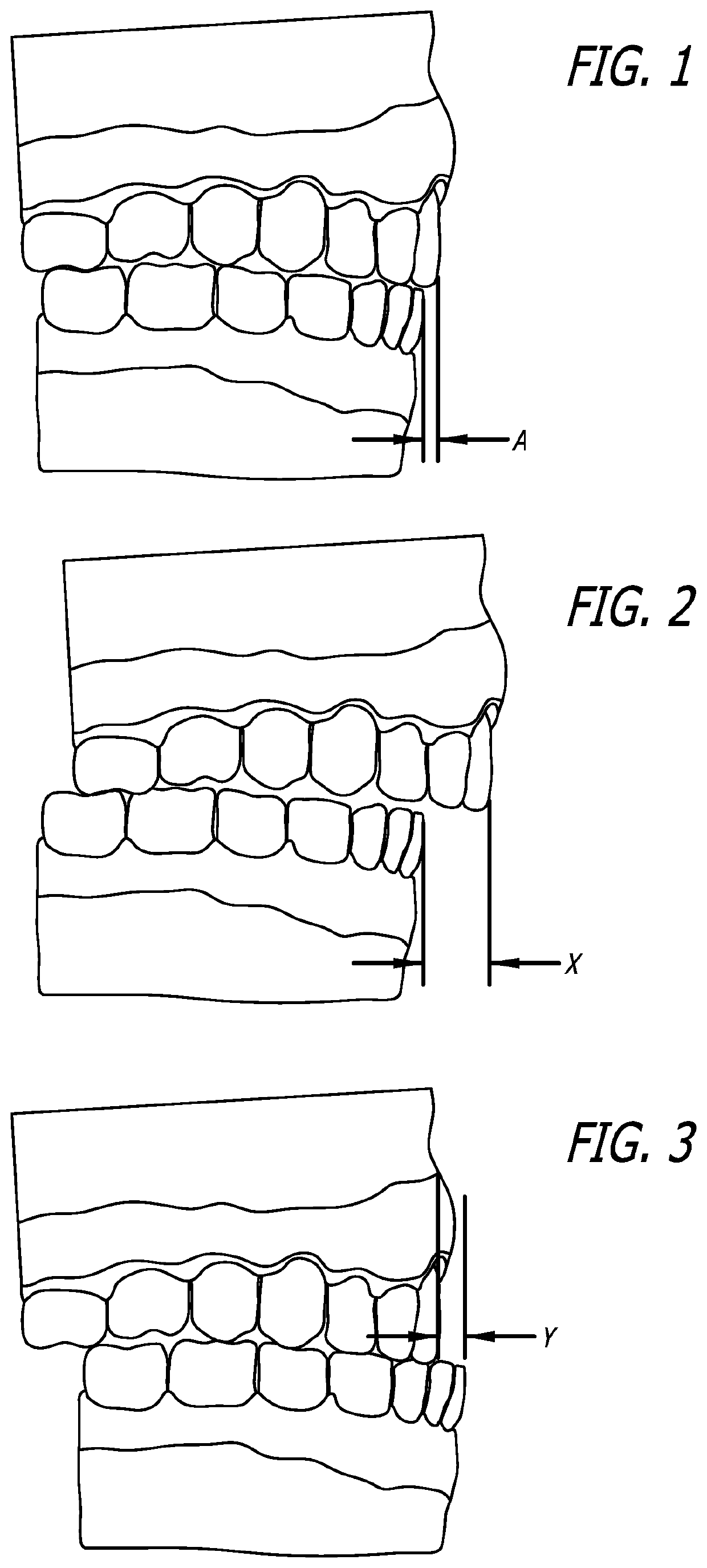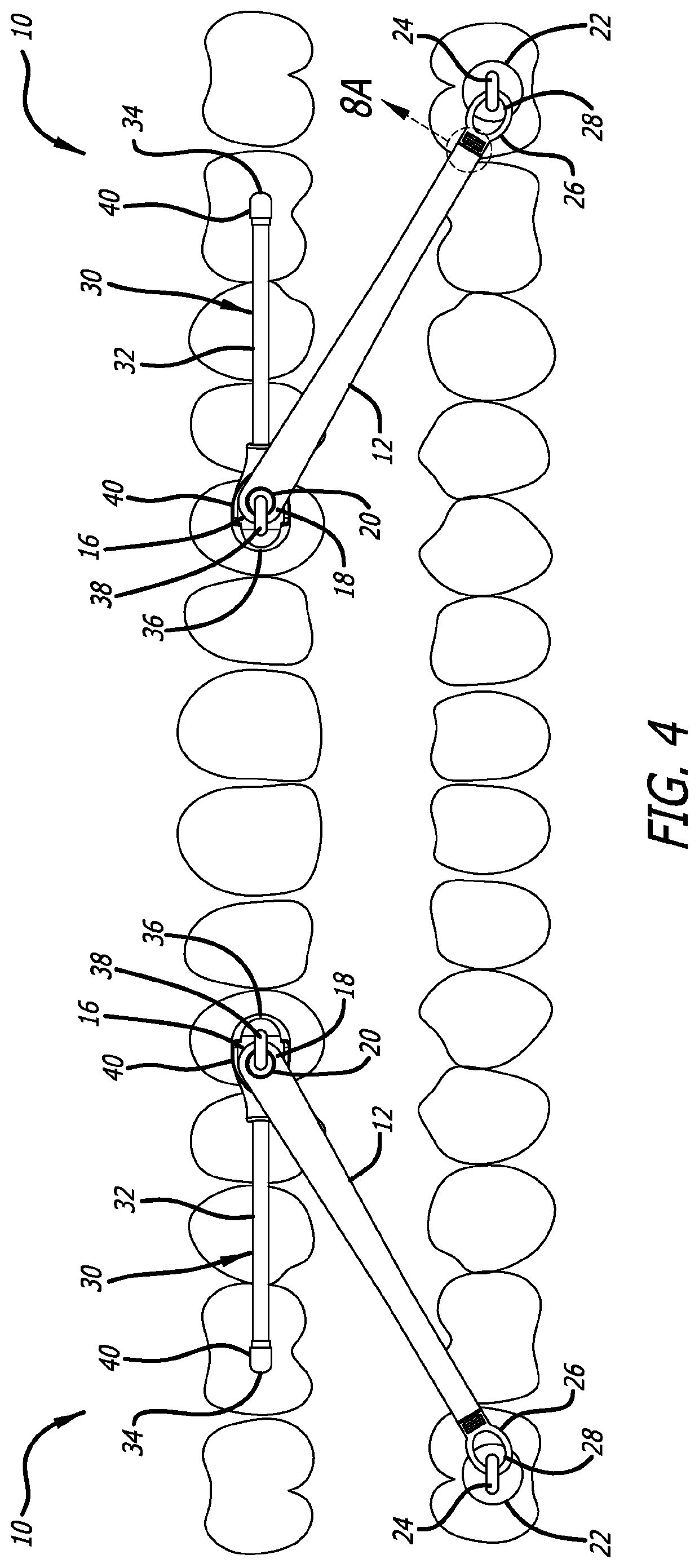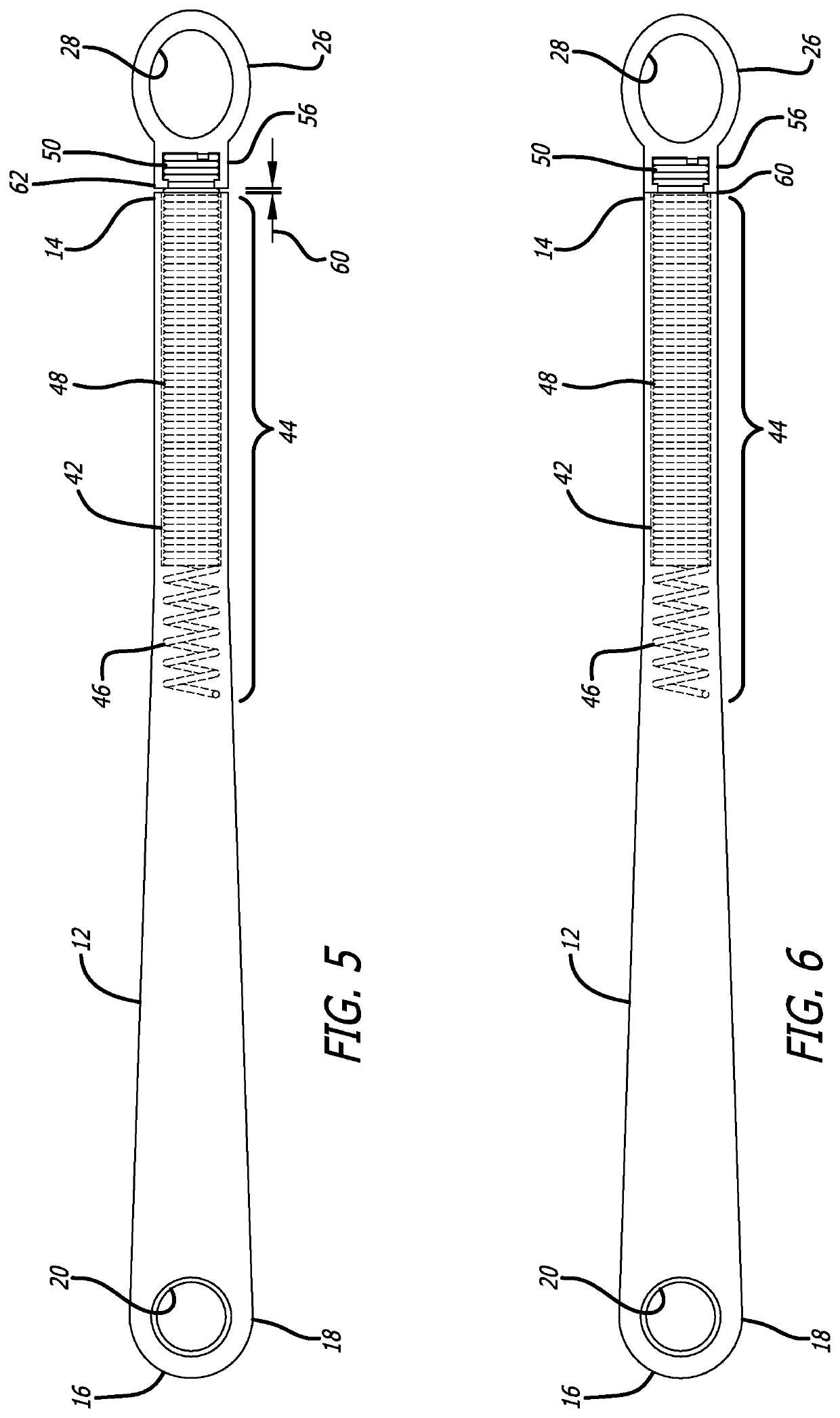Orthodontic appliance and method of use
a technology of orthodontic appliances and trays, applied in the field of orthodontic appliances, can solve the problems of stalling orthodontic treatment, devices cannot be used alone to correct class ii and class iii malocclusions, etc., and achieve the effect of constant tension
- Summary
- Abstract
- Description
- Claims
- Application Information
AI Technical Summary
Benefits of technology
Problems solved by technology
Method used
Image
Examples
Embodiment Construction
[0041]Embodiments of the present invention include an orthodontic appliance assembly that is attached to the maxillary and mandibular jaws to apply a moving force to the mandibular jaw to reposition it relative to the maxillary jaw to correct a patient's bite. The present invention is particularly useful in treating Class II or Class III malocclusions. As shown in FIG. 1, the teeth and the maxillary and mandibular jaws are positioned in normal alignment. FIG. 2 illustrates the orientation of mandibular and maxillary jaws relative to each other in a Class II malocclusion. FIG. 3, illustrates the orientation of the mandibular and maxillary jaws relative to each other in a Class III malocclusion.
[0042]In keeping with the present invention, as shown in FIGS. 4-8B, an orthodontic appliance assembly 10 (sometimes referred to herein as a non-compliant motion device) includes an elongated member 12 having a distal end 14 and mesial end 16. A first retaining member 18 is attached to the mesi...
PUM
 Login to View More
Login to View More Abstract
Description
Claims
Application Information
 Login to View More
Login to View More - R&D
- Intellectual Property
- Life Sciences
- Materials
- Tech Scout
- Unparalleled Data Quality
- Higher Quality Content
- 60% Fewer Hallucinations
Browse by: Latest US Patents, China's latest patents, Technical Efficacy Thesaurus, Application Domain, Technology Topic, Popular Technical Reports.
© 2025 PatSnap. All rights reserved.Legal|Privacy policy|Modern Slavery Act Transparency Statement|Sitemap|About US| Contact US: help@patsnap.com



